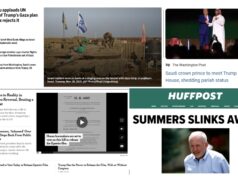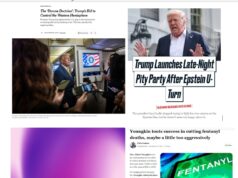Good stuff, including from former Loudoun County Supervisor Andrea McGimsey (now moved on to much bigger/better things as Senior Director, Global Warming Solutions at Environment America – congratulations!). – Lowell
Smart growth, environmental groups release ‘Blueprint’ for transportation ahead of Northern Virginia Transportation Authority plan
Blueprint for Better Transportation provides framework for multi-modal transportation and stronger communities
ARLINGTON, Virginia – More than 10 smart growth and environmental groups from around the region released a plan for expanding transportation choices and creating better communities in northern Virginia on Wednesday. The Blueprint for Better Transportation in Northern Virginia is a comprehensive recommendation for regional transportation planning focused on reducing the amount residents must drive. If implemented, the Blueprint would use existing transportation funds to invest in stronger economies, healthier communities and cleaner air and water – while also mitigating traffic congestion.
The Blueprint provides a framework and list of transportation projects that will create mixed-use, walkable, bikeable, transit-oriented communities throughout the region. The plan focuses on combining transit-oriented development with improved access to regional transit so that more people can walk, bicycle and drive to transit for daily trips.
“As the Northern Virginia Transportation Authority decides how to spend over a billion dollars in transportation funds during the next six years, it is critical that we invest in projects that are equitable, provide multiple benefits, and more travel choices for residents and commuters,” Karen Campblin, Transportation and Smart Growth Chair of the Sierra Club Virginia Chapter, said.
Groups endorsing the Blueprint include the Sierra Club, Environment Virginia, the Climate Reality Project: Northern VA Chapter, the George Mason University Center for Climate Change Communication, the Fairfax Alliance for Better Bicycling, Network NoVA, Friends of Accotink, the Southern Environmental Law Center, the Audubon Naturalist Society, the Coalition for Smarter Growth and the Prince William Conservation Alliance.
“How and where we build our communities is so important to reducing carbon pollution from the transportation sector, which is now the #1 driver of global warming. If people can safely walk, bicycle, and reach mass transit, they have the freedom to choose a carbon-free way to go about their days,” Andrea McGimsey, Senior Director, Global Warming Solutions, Environment America said.
Many of the projects in the Blueprint are relatively inexpensive improvements such as sidewalk, bike, trail and bus connections that knit together more walkable, transit-oriented communities. Model communities are emerging in areas as diverse as Tysons, Potomac Yard in Alexandria, Ashburn Station in Loudoun and Woodbridge, Manassas and Manassas Park in Prince William. These projects have multiple benefits, including expanded transportation choices, reduced pollution from motor vehicles, and connecting vibrant communities that employers and employees are increasingly seeking. Reports on walkable urban places by Chris Leinberger and his team at George Washington University have documented the economic and fiscal benefits of mixed-use centers.
“Our plan focuses on improving options for Prince William and Manassas commuters — particularly through improvements to VRE and bus service, fixing some road bottlenecks, and promoting walkable, transit-oriented communities in Woodbridge, Manassas and Manassas Park,” Charlie Grymes, Chair of Prince William Conservation Alliance, said.
“For Loudoun County, our plan prioritizes efficiency and connectivity. This is accomplished by a focus on transit-oriented development, the creation of a parallel local road network, improving east-west transit commuting, and increasing our bicycle-pedestrian options,” Gem Bingol of The Piedmont Environmental Council said.
The Northern Virginia Transportation Authority’s long-range transportation plan identified $43 billion in potential transportation projects during the next 25 years, far beyond foreseeable revenues. That financially unconstrained plan would fuel more long-distance driving and make little progress toward a more sustainable future for our region. The shortcomings of the plan demonstrate the need for a new direction in transportation that complements smart land uses so that residents and commuters have choices in how they get around.
“Every resident who lives or works in a mixed-use, mixed-income, transit-oriented community has the opportunity to drive less, and use other modes, and each contributes to a regional transportation solution,” Stewart Schwartz, Executive Director of the Coalition for Smarter Growth, said. “NVTA’s $43 billion long-range plan fails to focus on supporting more sustainable land use and therefore will not solve our traffic problems. Our plan provides sensible, cost-effective investments that will not only mitigate traffic congestion but also create communities where people want to live and work, and expand local governments’ tax bases.”
###
Information on the Blueprint for Better Transportation in Northern Virginia can be found at http://vasierra.club/blueprint
The blueprint itself can be read here: http://vasierraclub.org/













